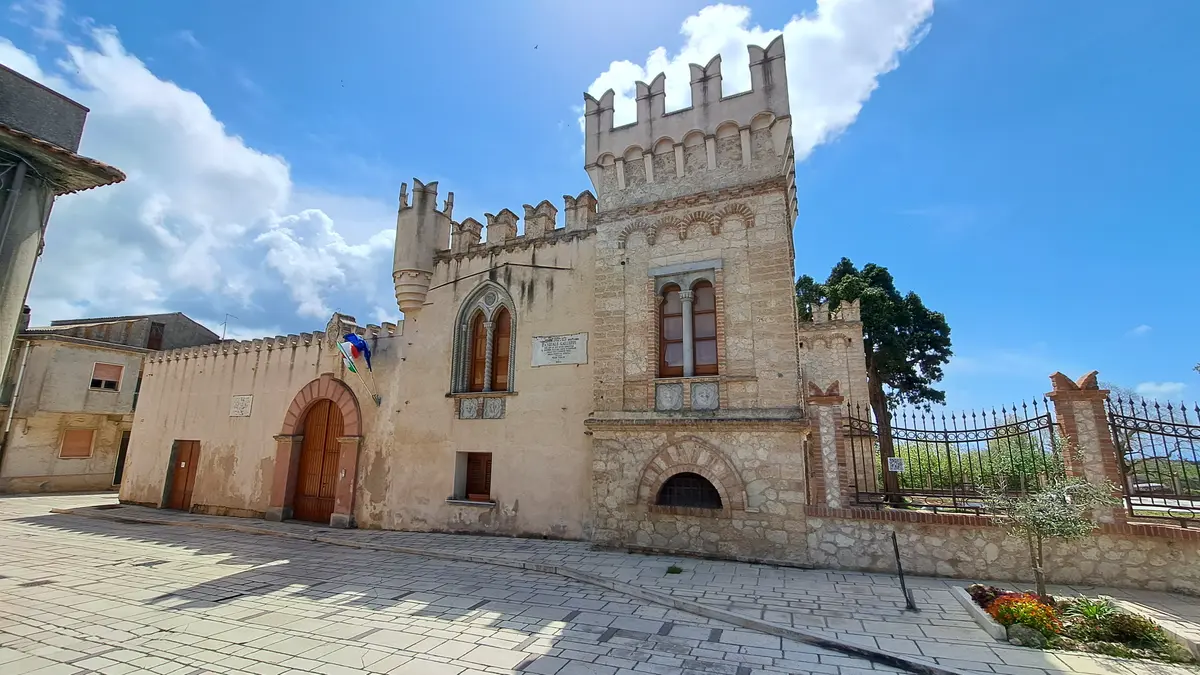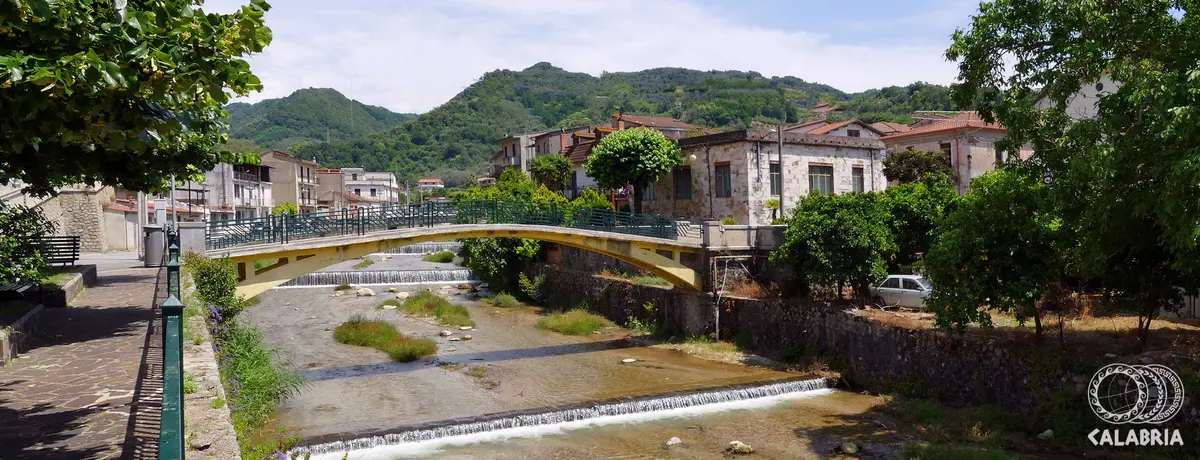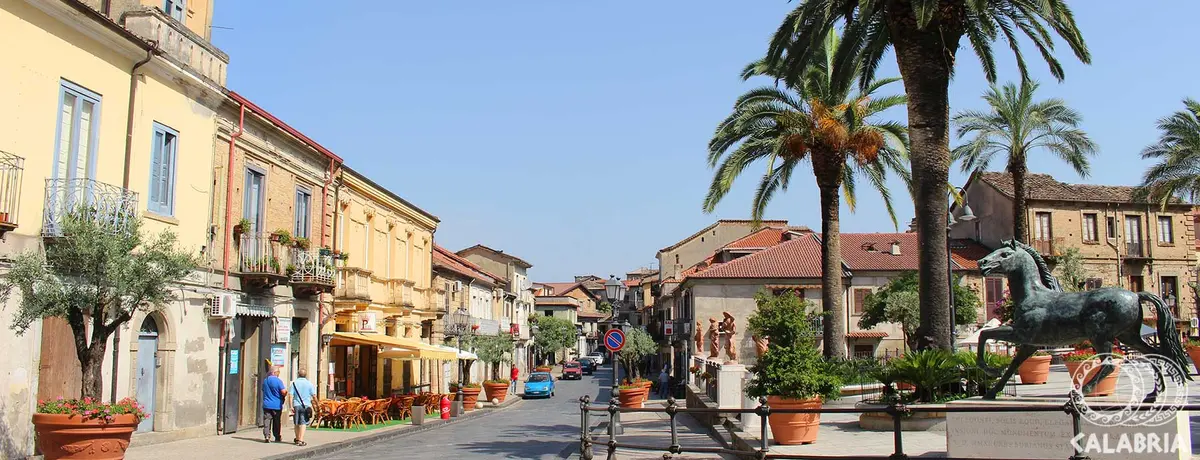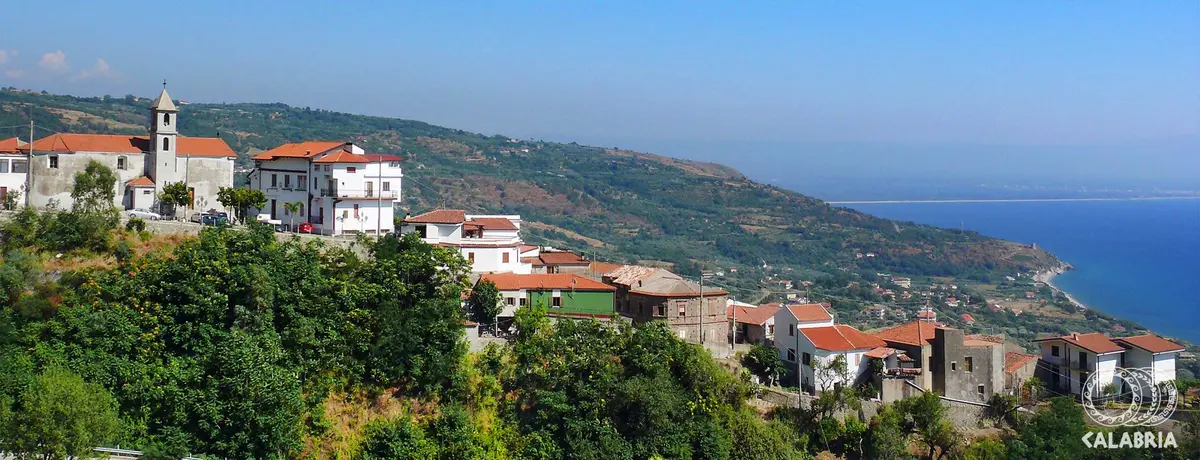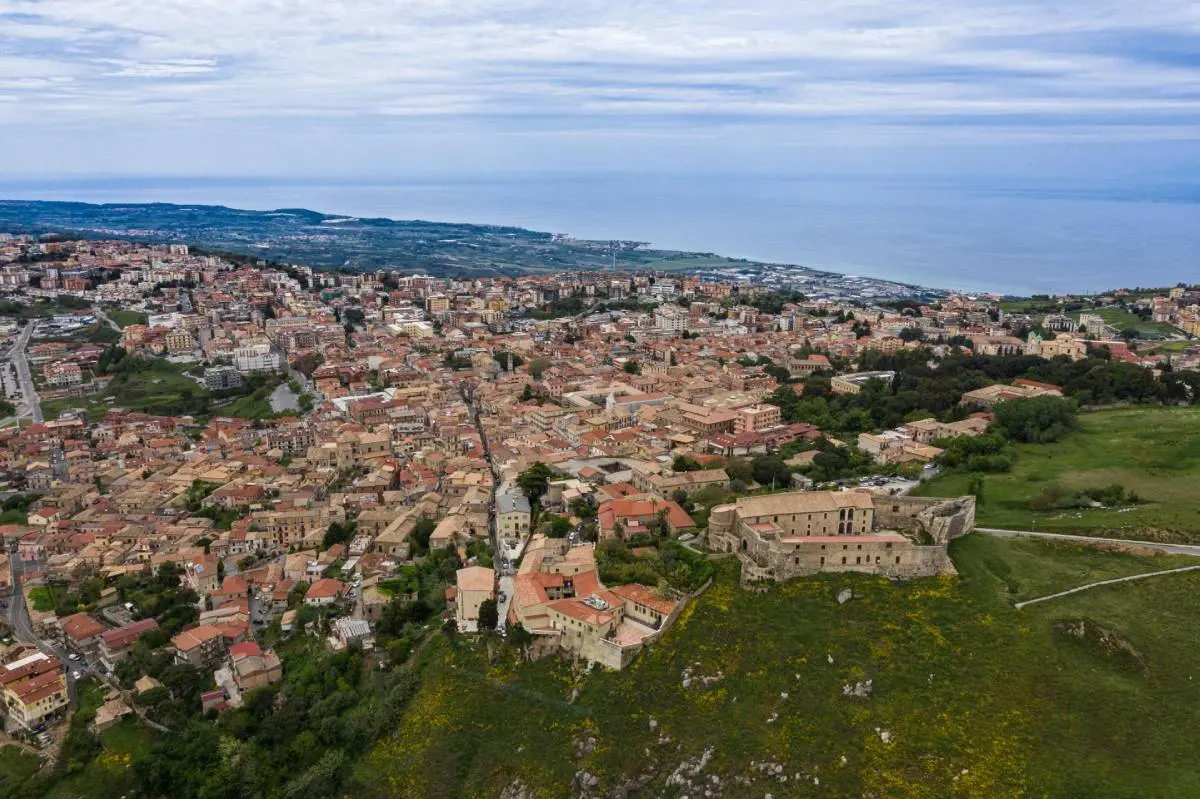Mileto
Mileto, the ancient Norman capital
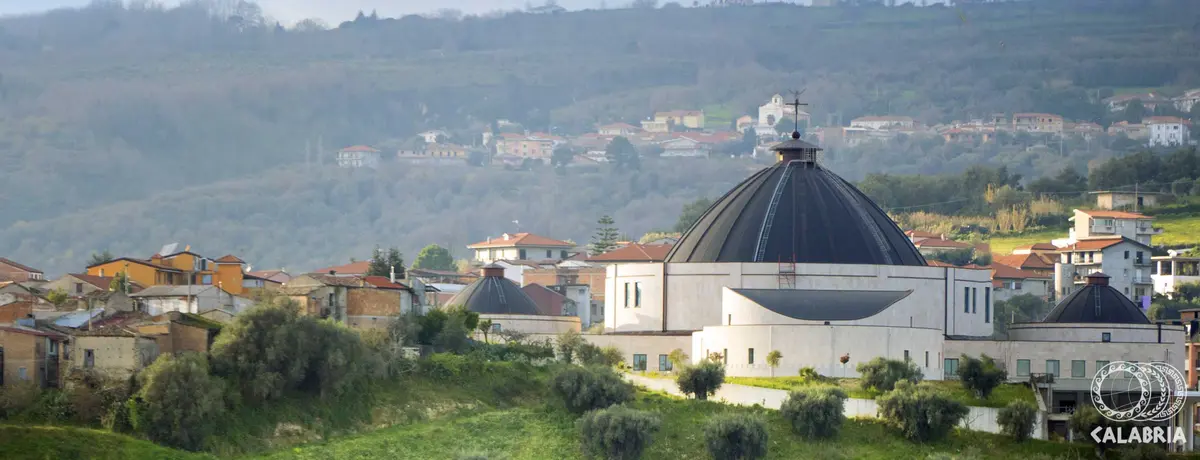
Historical centres
It was called the Norman capital as a result of the significant political role it played during that period and is a small village that lies on flatland bordered by Mount Poro and the city of Vibo Valentia.
Mileto has very ancient origins (it is believed that it was probably founded by people from the colony of Miletus in Asia minor banished by Darius). It became important when Mileto became the region’s capital and an Episcopal see during the times of Roger the Norman.
Mileto became the region’s capital and an Episcopal see during the times of Roger the Norman.
The old town
The area of “Mileto Vecchia” is the only existing Medieval Archaeological Park in Calabria.
It is likely that Mileto was frequently visited in eras prior to the Hellenic period. It was built on the ridge of the sandstone two hills, surrounded by deep valleys which created a natural defence system. Already in existence during the Byzantine era, the castrum of Mileto was chosen by Roger I as the capital of his newly formed Norman earldom of Calabria. The city’s main areas were three: the palazzo di Ruggero (Roger’s Palace), the Cattedrale di San Nicola (Cathedral of St Nicholas) and the Vescovato (Bishopric), not far from which there was a chapel or small church dedicated to St. Martin of Tours and the hillock of Monteverde, on which between 1063 and 1070, the “regal Badie” was built; the “monastero benedettino della SS. Trinità” (Benedictine monastery of the holy trinity) with architectural formulas that had never been used in the South. Antiquarian archaeological interest on the ruins of the ancient city emerged immediately, due to the arrival of large numbers of European travellers, intrigued by the Norman Capital. Although destroyed, during that period Mileto still preserved ancient and valuable vestiges such as the Roman sarcophagus reused as Roger's tomb, Latin epigraphs, columns and other marble elements. In subsequent decades, the abandoned site became empty due to the sale and export of construction material and many monuments were plundered, while the most significant sculptural and decorative works (even those of the classical period), went missing or were stolen. It was only from the nineties that archaeological surveys were carried out on the site, at the apses of the SS. Trinità and the area of the episcopal complex, while latest campaigns of architectural restoration works of the remaining buildings date back to 2015.
Mileto's Cathedral
The ancient cathedral of Mileto, which merged both Norman architecture with Byzantine and Muslim culture, was destroyed in the 1783 earthquake that devastated the entire town of Mileto. The construction of a new cathedral lasted over 30 years. The church was in the form of a Latin cross with a dome, enriched with precious Baroque-style marbles and housed the most important works of art from the ancient cathedral. The subsequent earthquakes of 1905 and 1908 also destroyed the nineteenth-century building. The new and current church was built on the ruins of the previous building, as a project of the architect Faustino Roncoroni and was consecrated by Bishop Paul Albera on 25 October 1930. The church is in the Romanesque style, with three entrance doors in bronze representing the Nativity, the crucifixion and the resurrection of Jesus Christ. The interior has a Latin cross with three naves divided by two orders of six columns. The central nave boasts a wooden coffered ceiling and the centre of the presbytery features the painting Assunzione della Vergine in Cielo (Assumption of the Virgin into Heaven) attributed to the painter Giuseppe Naso. The left aisle leads to the Cappella del Santissimo Sacramento (Chapel of the Blessed Sacrament), with frescoes painted by the Calabrian artist Grillo. The chapel's centre has a marble altar in polychrome inlay and the Sacro Cuore (Sacred Heart) with a crown of angels. A marble statue of 1549 with the effigy of San Nicola di Bari, patron of Mileto, overlooks the right nave.
State Museum of Mileto
The State Museum of Mileto was established in 1997 and is housed in the Palazzo Vescovile, adapted for this purpose and suitably restored, where many of the finds of ancient Mileto are displayed. Its importance is beyond question, as it embraces the town’s history from the Roman era, through the Norman re-founding of the XI century up to the destructive earthquake of 1783 and finally, to the reconstruction of the town in a new site. Particular attention was devoted to the collection of numerous finds of ancient Mileto that was destroyed by the earthquake of 1783: marbles, capitals and other materials hitherto preserved on the town’s initiative and by Mileto’s Episcopal curia and coming from the ruins of the Abbazia della SS.ma Trinità (Abbey of the Holy Trinity). Collections are divided by historical eras, and boast works of great value and beauty such as the beautiful Roman polychrome mosaics found on the town’s outskirts. Eight coins minted in early 10th century and included, along with 31 other less ancient pieces, in a single collection, are of Byzantine origin. Considerable space is dedicated to works coming from the abbazia della SS Trinità (abbey of the Holy Trinity) and the Cathedral, among these is the sarcophagus of Roger of Sanseverino, built in the XIV century by the skilled hands of the "Master of Mileto", known as Francesco Negri Arnoldi. Paintings worthy of mention include the icon on the slate of San Nicola di Bari and the Madonna della Pace (Our Lady of Peace) which is a beautiful canvas by Giuseppe Naso. The silverware and the sacred garments also deserve special attention, among these: a censer in chiselled silver and incense holder, as well as a precious globe and late renaissance Crucifix in ivory by Alessandro Algardi. Lastly, the cross and Byzantine inscription on a column unearthed in ancient Mileto have generated great curiosity and interest: an identical inscription, and until now the only one, has been found in the Byzantine church of Cattolica di Stilo. The area dedicated to the sacred art with precious items collected and preserved by the Episcopal curia is of great artistic significance.
Archive of the Diocese of Mileto
The Historical Archive of the Diocese of Mileto was established in 1200. Its most important documents include fifteen parchments dating back to the period between the XI century and 1594, accounts of pastoral visits starting from the XVI century, stamps and seals of the Diocese, plates, documents of the parishes, brotherhoods and monasteries, orders, civil and criminal proceedings, etc. A large number of volumes were published which collect the results of studies and research concerning the archive: the volumes, collected under the Tabularium Mileten series, can be requested directly from the Archive's management. Most of the material retained consists in legal, religious and local history documents with a total of 5067 documents.
No result
